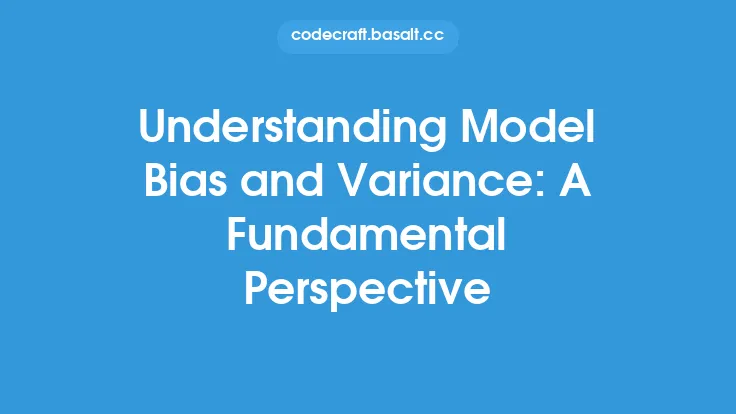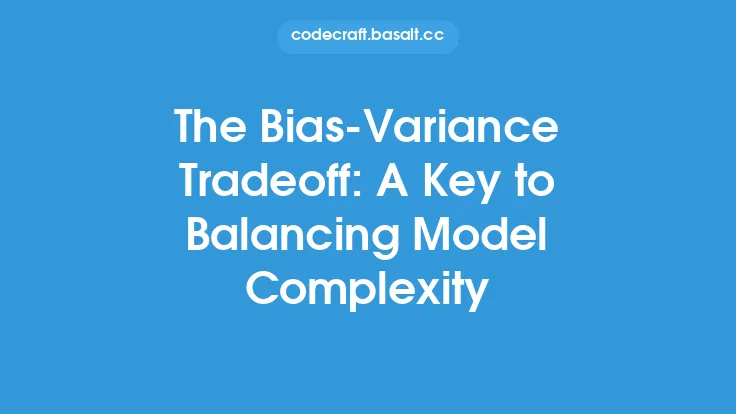When it comes to machine learning, model selection is a crucial step in the development of predictive models. The goal of model selection is to choose the best model that generalizes well to unseen data, and there are several principles that can guide this process. In this article, we will explore the evergreen principles of model selection, which are fundamental approaches that remain relevant regardless of the specific machine learning algorithm or problem being tackled.
Introduction to Model Selection Principles
Model selection principles are guidelines that help machine learning practitioners choose the best model for their problem. These principles are based on the idea that a good model should balance complexity and simplicity, and should be able to generalize well to new, unseen data. Some of the key principles of model selection include Occam's Razor, which states that simpler models are preferred over more complex ones, and the principle of parsimony, which states that models should be as simple as possible while still capturing the underlying patterns in the data.
The Importance of Cross-Validation
Cross-validation is a technique that is widely used in model selection to evaluate the performance of a model on unseen data. The basic idea behind cross-validation is to split the available data into training and testing sets, and then use the training set to train the model and the testing set to evaluate its performance. This process is repeated multiple times, with different splits of the data, to get a reliable estimate of the model's performance. Cross-validation is an essential principle of model selection because it helps to prevent overfitting, which occurs when a model is too complex and fits the noise in the training data rather than the underlying patterns.
Model Complexity and Regularization
Model complexity is a critical factor in model selection, and regularization is a technique that is used to control model complexity. Regularization involves adding a penalty term to the loss function of the model to discourage large weights and prevent overfitting. There are several types of regularization, including L1 and L2 regularization, which are commonly used in machine learning algorithms such as linear regression and logistic regression. The choice of regularization technique depends on the specific problem and the type of model being used.
Information Criteria and Model Selection
Information criteria, such as Akaike information criterion (AIC) and Bayesian information criterion (BIC), are widely used in model selection to compare the performance of different models. These criteria are based on the idea that a good model should have a high likelihood of observing the data, and should be penalized for complexity. AIC and BIC are calculated using the likelihood function of the model, and the model with the lowest AIC or BIC is preferred. Information criteria are useful because they provide a way to compare models that are not nested, and can be used to select the best model from a set of candidate models.
Bayesian Model Selection
Bayesian model selection is a principled approach to model selection that is based on Bayesian inference. The basic idea behind Bayesian model selection is to calculate the posterior probability of each model given the data, and then select the model with the highest posterior probability. Bayesian model selection is useful because it provides a way to incorporate prior knowledge into the model selection process, and can be used to select models that are not comparable using traditional methods.
Model Selection and Hyperparameter Tuning
Hyperparameter tuning is the process of selecting the best hyperparameters for a machine learning algorithm, and is a critical step in model selection. Hyperparameters are parameters that are set before training the model, and can have a significant impact on the performance of the model. There are several techniques that can be used for hyperparameter tuning, including grid search, random search, and Bayesian optimization. The choice of hyperparameter tuning technique depends on the specific problem and the type of model being used.
Conclusion
Model selection is a critical step in the development of predictive models, and there are several evergreen principles that can guide this process. These principles include Occam's Razor, cross-validation, model complexity and regularization, information criteria, Bayesian model selection, and hyperparameter tuning. By following these principles, machine learning practitioners can select the best model for their problem, and develop predictive models that generalize well to unseen data. Whether you are working on a simple linear regression model or a complex deep learning model, the principles of model selection remain the same, and can be used to develop models that are robust, reliable, and accurate.





